Along with a few new wines…
We have some new labels! It will take some time to phase out our old labels, but gradually everything will switch to the new labels.
But, wait, Meg…what about these “new wines”?! Well, as you may already know, we’ve recently released a new red blend “Rubra”– which is described by Anne as this:
“This is a flavorful blend of our favorite Iowa reds! If you’re looking to be a red wine drinker, this is the perfect transition wine. Rubra is full of flavor: fresh fruit, chocolate, butterscotch, & vanilla.”
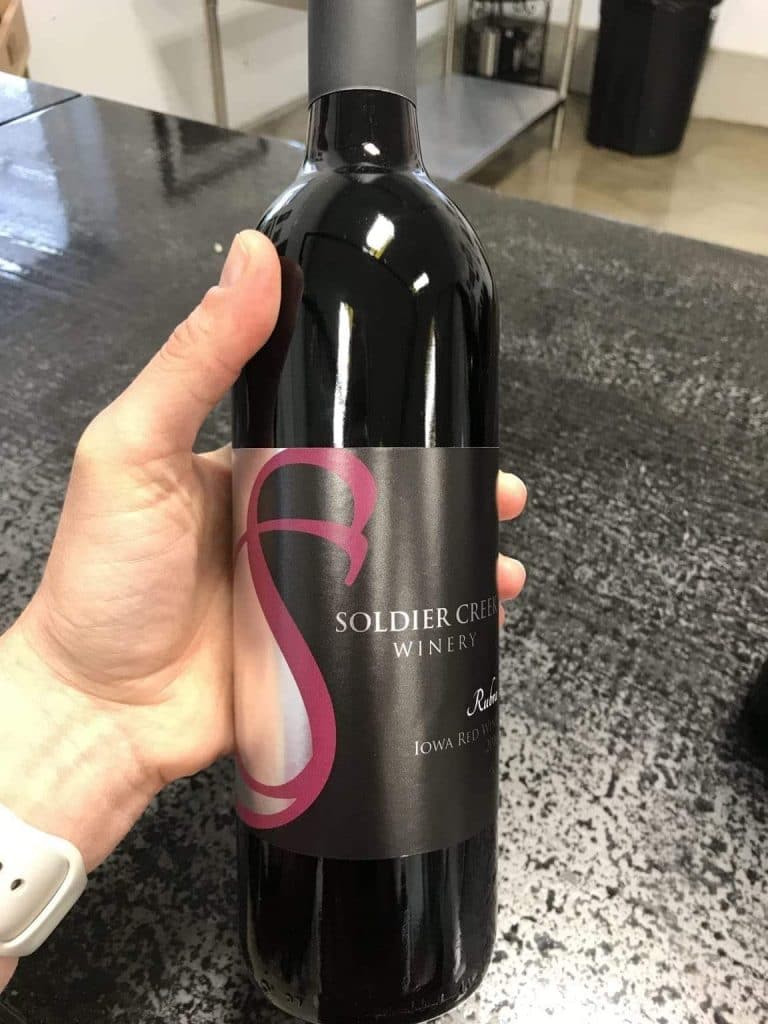
As of Wednesday this week, we also released our 2016 Marquette Reserve for PRE-ORDER. This wine is without a doubt a feather in Anne’s winemaking-cap, I can’t say enough about it! So, I’ll let her describe it from here:
“This wine….it is perfectly balanced & full-bodied. Everything you would expect from a dry red wine. I get flavors of raspberry, cherry, & chocolate. It’s very aromatic– I even get a bit of rose on the nose. This wine is perfect.
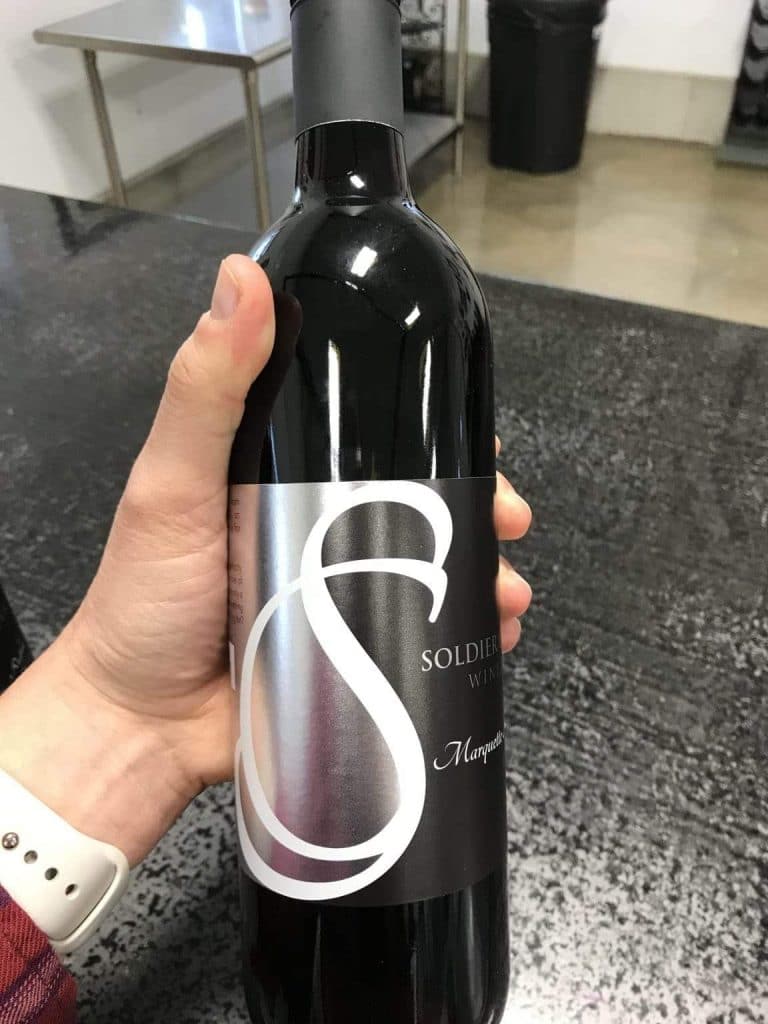
Did you see the new labels?!
I mean, look at em! They’re shiny! And pretty! Okay, but really, here are the new additions to our label:
- A sweetness scale on the back, so that you know before you buy how dry or sweet the wine is.
- Every label has a different colored “SC” on the front– so you can know your favorite color and find it faster in the winery or a retail location! Are we not geniuses? (teeeehehehehe!)
- The label is the shiny, silver-style label like Paragon Pink– this label is great because it repels water better than our old labels. So, when we are at tastings and have the bottles in the ice bucket, the label won’t peel off!
- The label is all one! This makes the bottling progress SO MUCH faster!
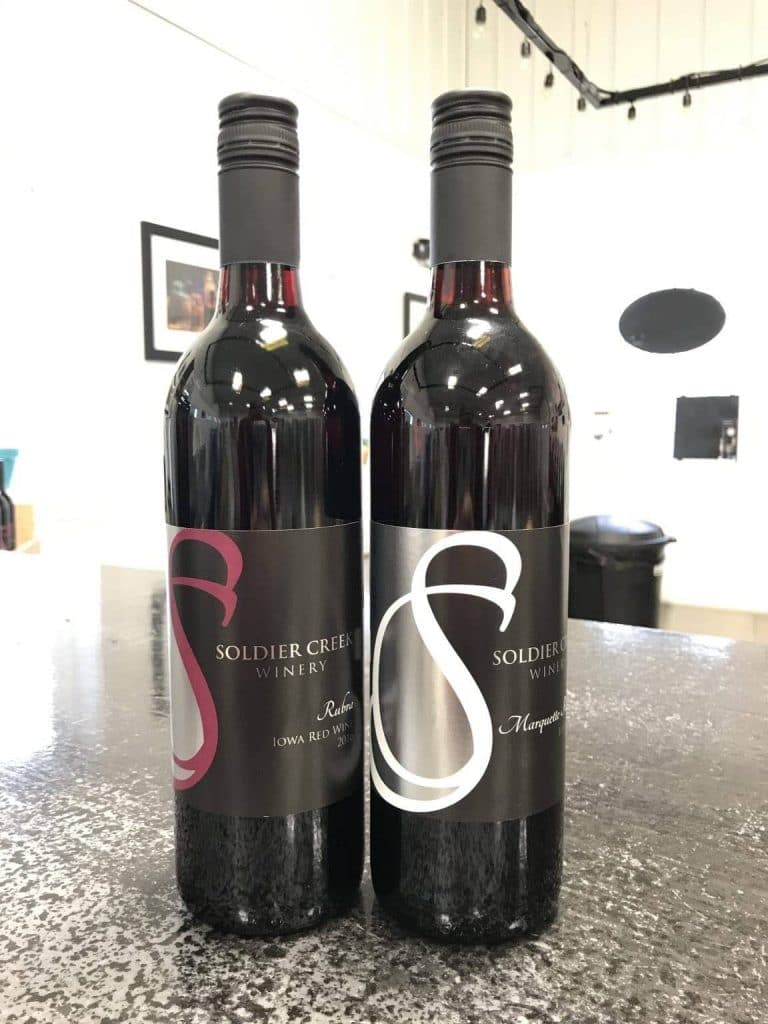
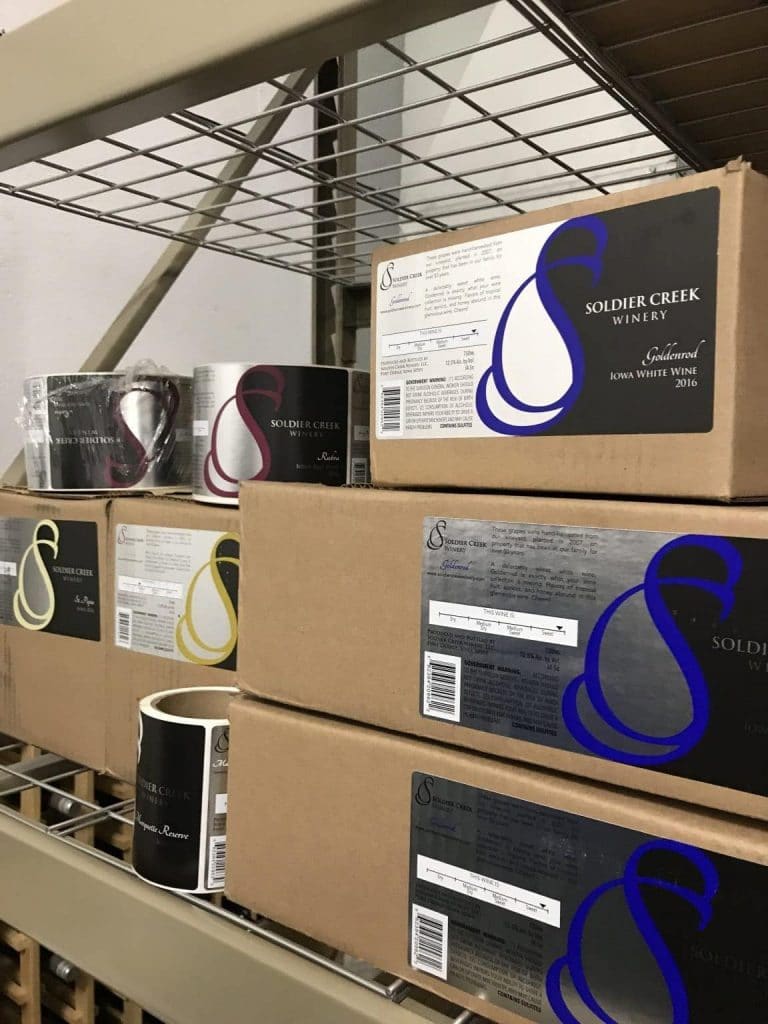
keep your eyes peeled!
For another new wine and all of those new labels!
with midbest love,
Meg
good food. good wine.
They belong together. That’s why I created a handy place for you to find some delicious recipes and suggested Soldier Creek wine pairings! Right here:
See how easy that was? Lunch, dinner, dessert, and the wine pairings to go with each… all in one place!
Once you get the hang of how we choose our wine suggestions, you can start pairing your favorite dishes with our wine all on your own! We love looking for recipes on Epicurious and Bon Appetit. But, feel free to use your favorite recipe websites/books! Just to help you on your way to wine pairing greatness, here’s a handy info-graphic to help you quickly pair dearest Soldier Creek wine with lunch/dinner/dessert:

if you want to just sit back and relax though…
You can come on out to our wine & food pairing event: Pair Extraordinaire! Dan & Holly of Infinity Restaurant Group prepare a delicious 3 course meal and we pair our wines perfectly. This event will feature a three course meal starting with a tangy Mediterranean salad, followed by a delectable main course Greek chicken and sumptuous potatoes, and finally ending with a dessert of Lemon Blueberry Cheesecake. You will have the choice between Frontenac Gris & Maréchal Foch for your first two courses. For the dessert course, we will pair the Brianna with the Lemon Blueberry Cheesecake.
Get signed up today! Reservations are required by May 2nd.
there are your tools for creating deliciously paired meals
Take them and run, people! Also, check out all of our other Pinterest Boards! We have loads of ideas for your upcoming event in the winery, a place to find all of our blogs, and more.
with midbest love,
Meg
And now, for some news from the vineyard
In the past, we started pruning the grapes very early in the dead of winter with the risk of losing our fingers to frostbite. Now, we’ve grown older and wiser. We know that’s crazy. Also, we got some new tools this year! Mechanical pruners! Talk about fast pruning! We are getting done with rows faster than we ever have in past years, and we wait until it’s warm enough to feel our fingers. Because, smarts and stuff.
Everyone has had a turn…and nearly everyone has nicked a wire. These pruners can cut through anything! Including wires. Luckily, our vineyard manager is well versed in fixing wires. It’s really no problem, but it is a surprise when it happens! I speak from experience *insert eye roll here*.

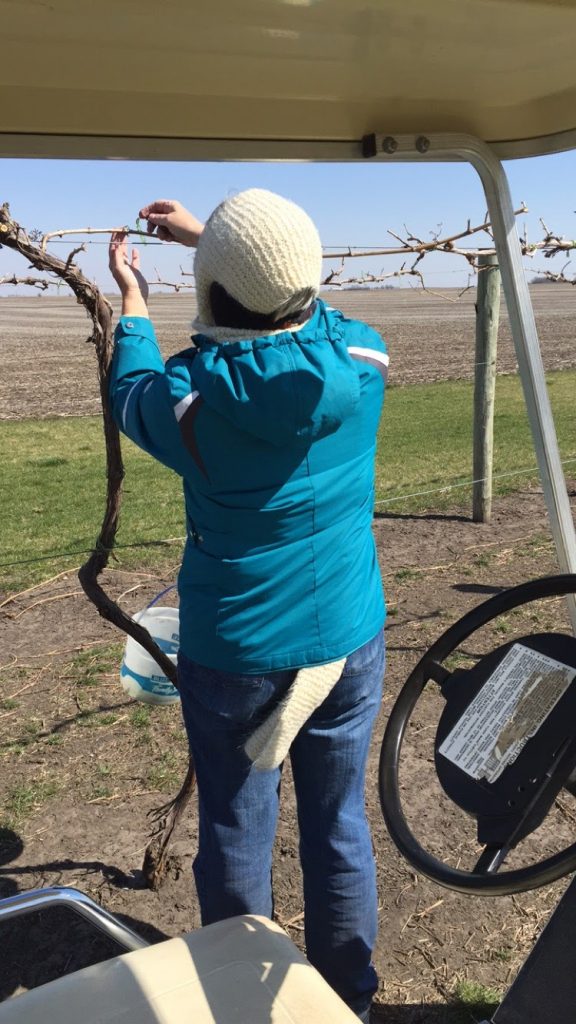

the drill
We decide where to start based on how we feel, really. There are some varieties that have more growth and are harder to prune than others– so you have to decide: do we want to start there or end there? I mean, this is a super tough decision. So, this year we chose to start with the hard stuff and leave the easy stuff for last.
We also started in the older, bigger vineyard. Right now, we are on track to be done with this vineyard in the next 5-7 days if the weather holds out!
Next, we have to start pruning and training the younger vineyard. We have done some light training in the past few years, but this year we expect a crop, so we have to be a bit more tough with the training.
Typically, with a grapevine in the Midwest, we grow and train the grapes for 3-5 years before expecting a normal crop load. The Junior Vineyard (the younger, smaller vineyard) is in it’s 3rd year of growth, so we will expect a crop from it this year. The first year is not always a reliably big crop load, but it’s good to get the plant ready to bear fruit. In the years prior, we would go through and clip off any little fruits so that the plant could focus on above- and below-ground growth. Ideally, the plant should be ready to bear fruit in the third year.
The plants in the Junior Vineyard may be small, but they are mighty! We are excited to have a new grape from this vineyard this year as well: Frontenac Blanc. So, keep your eyes peeled for those updates!
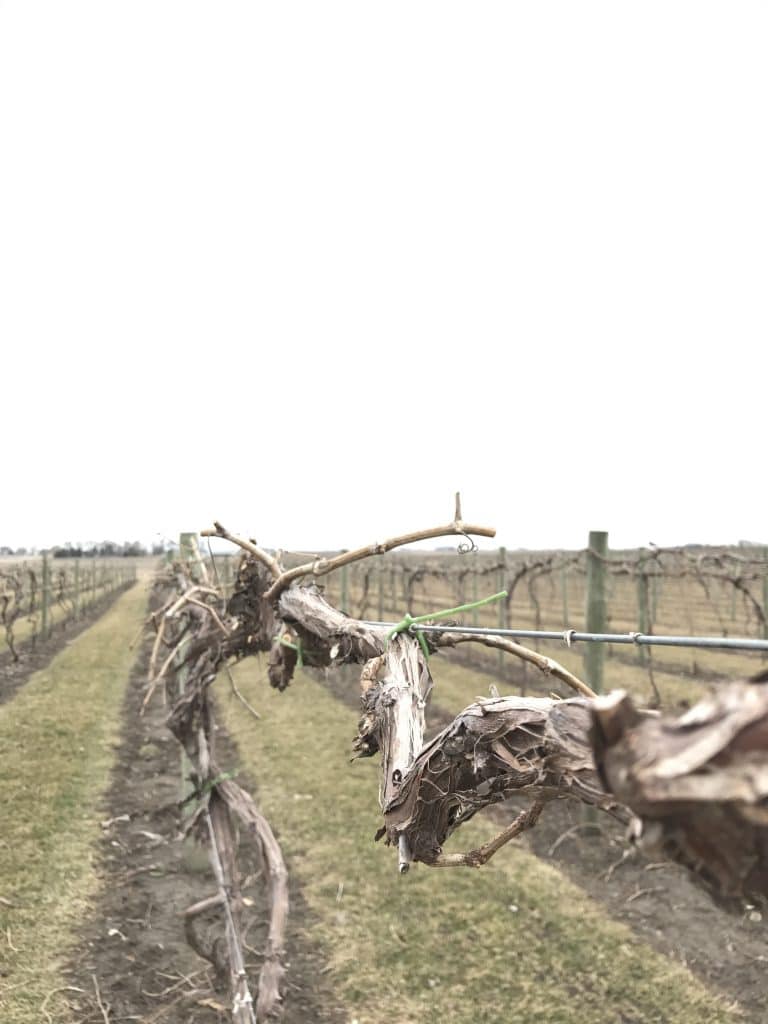
Ahhhhh a pruned vine!

This little tractor pulls all the vineyard cuttings out with that rake attachment on the back.
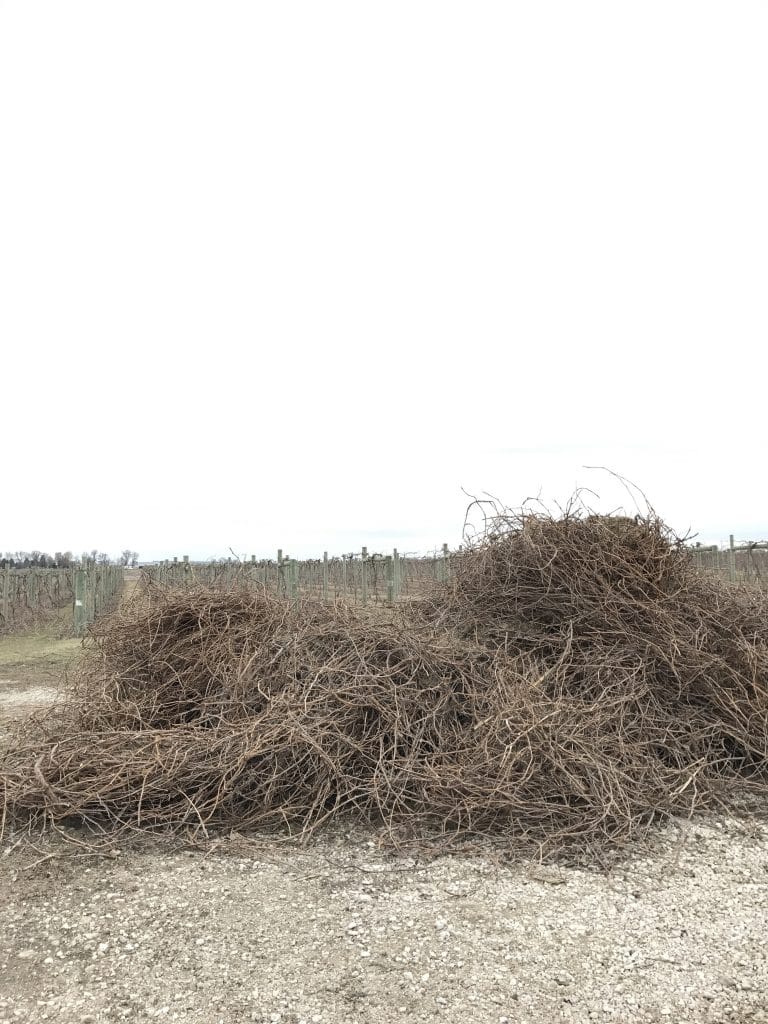
The “pile” so far!
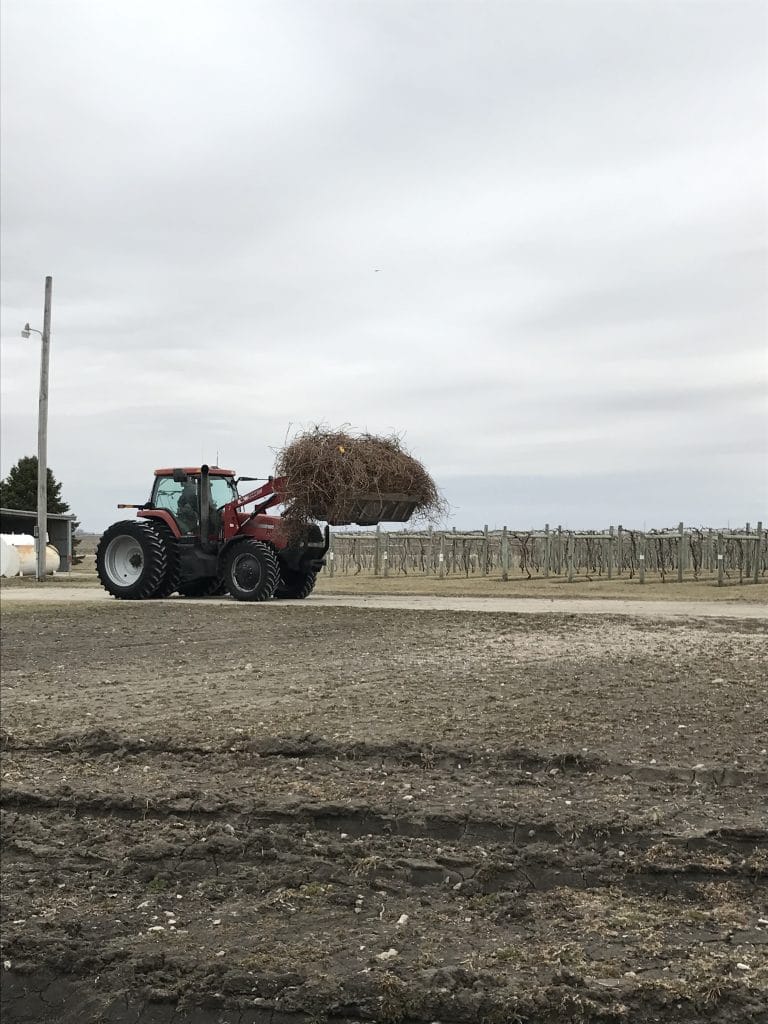
It really pays to have big tractors to do all the hard work 🙂
That’s all the newsworthy updates from the vineyard for now!
with midbest love,
Meg
if you’re like me
You don’t have dish or cable….you have an antenna on top of your house. More importantly, that antenna does NOT allow access to all the March Madness basketball games! So, you’re going out: to bars, to sports restaurants, to friend’s houses.

fear not fellow wino
I’m here to save you. Here is how to pair your favorites Iowa wines (ahem, Soldier Creek Wines) with all of the March Madness food and feels (you win some, you lose some).
basketball food, basketball wine
Here are some handy graphics to help you with your food and wine pairing:
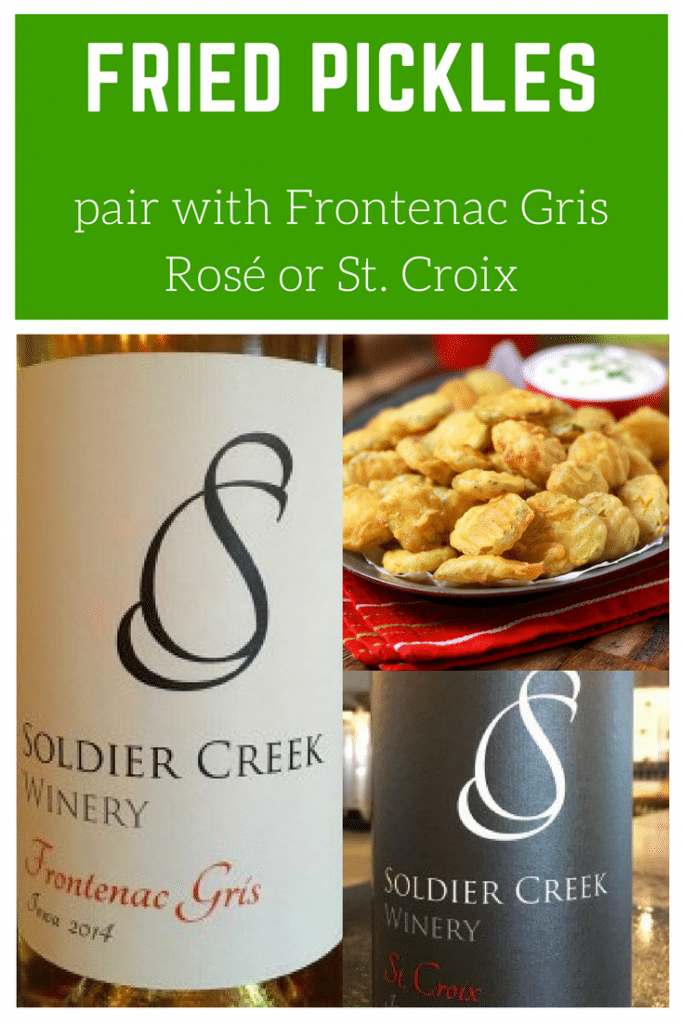

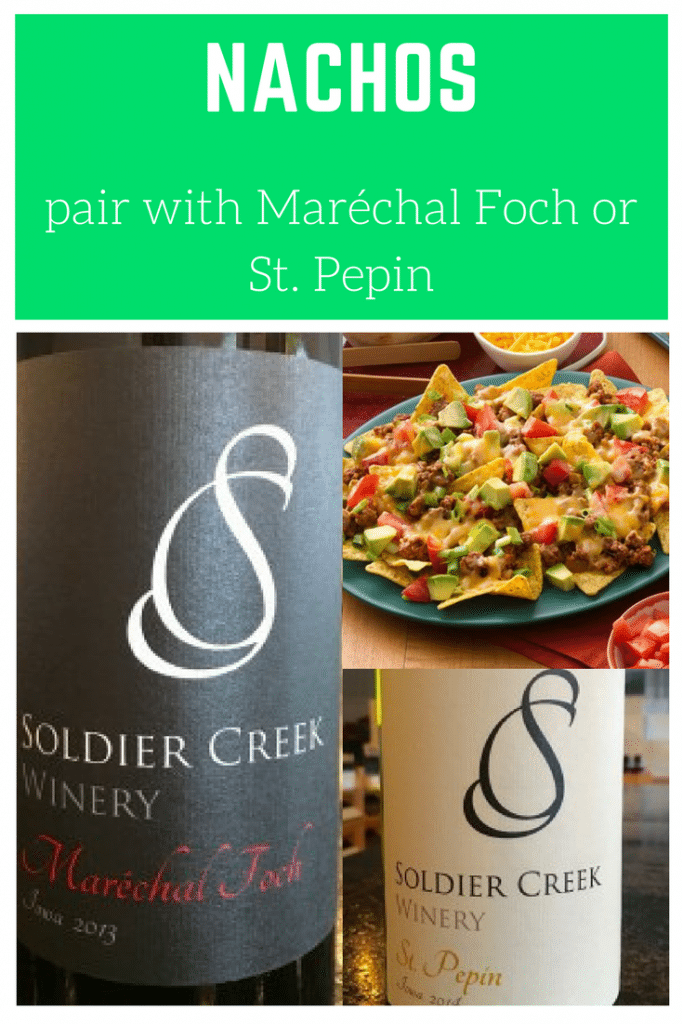
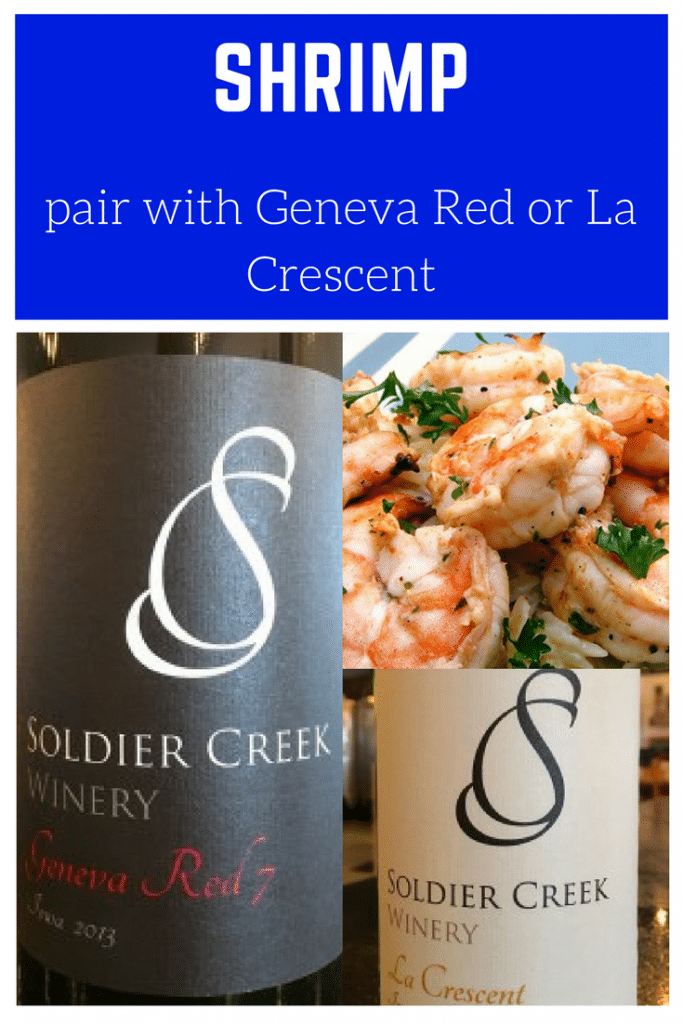
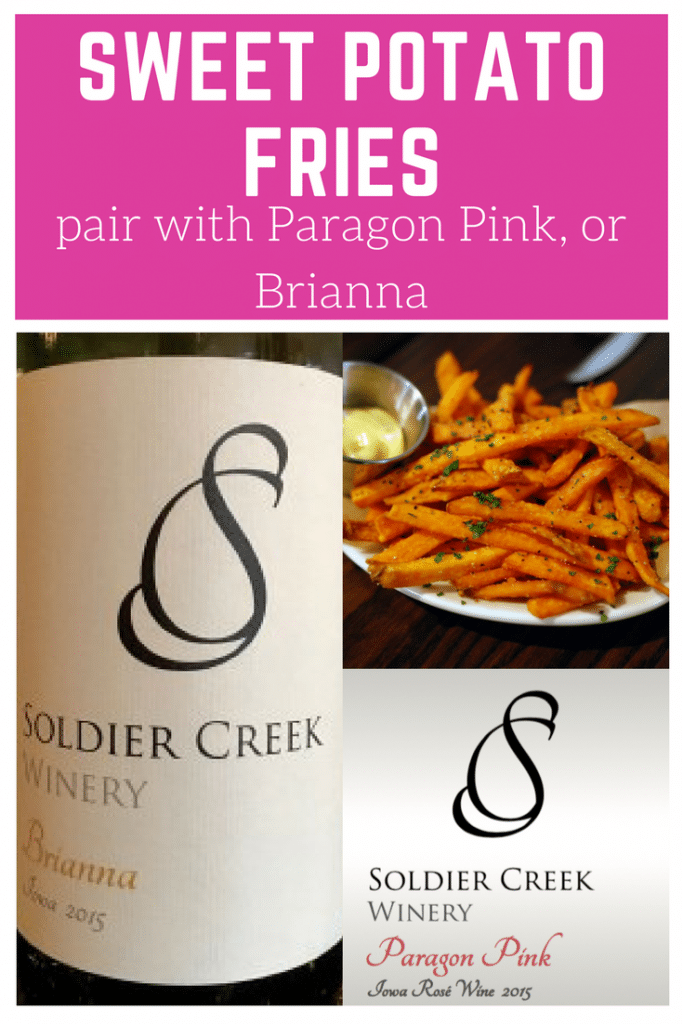

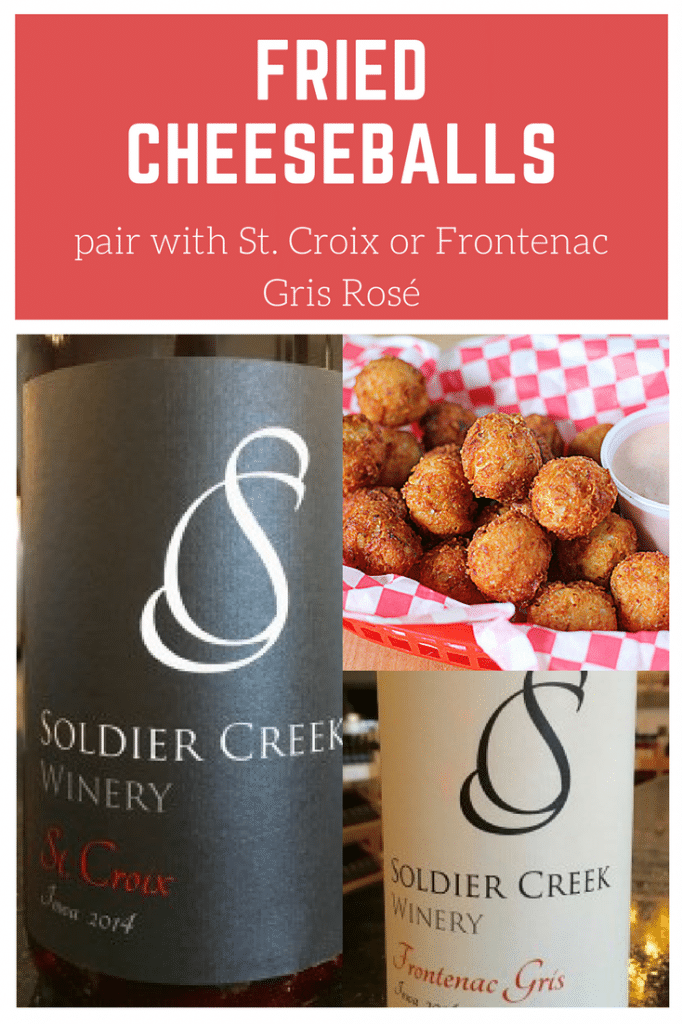
win or lose
You really can’t go wrong with Soldier Creek Wine! Celebrate your wins or have a glass to remember your team’s valiant effort in the March Madness tournament! Here, another graphic, just in case:
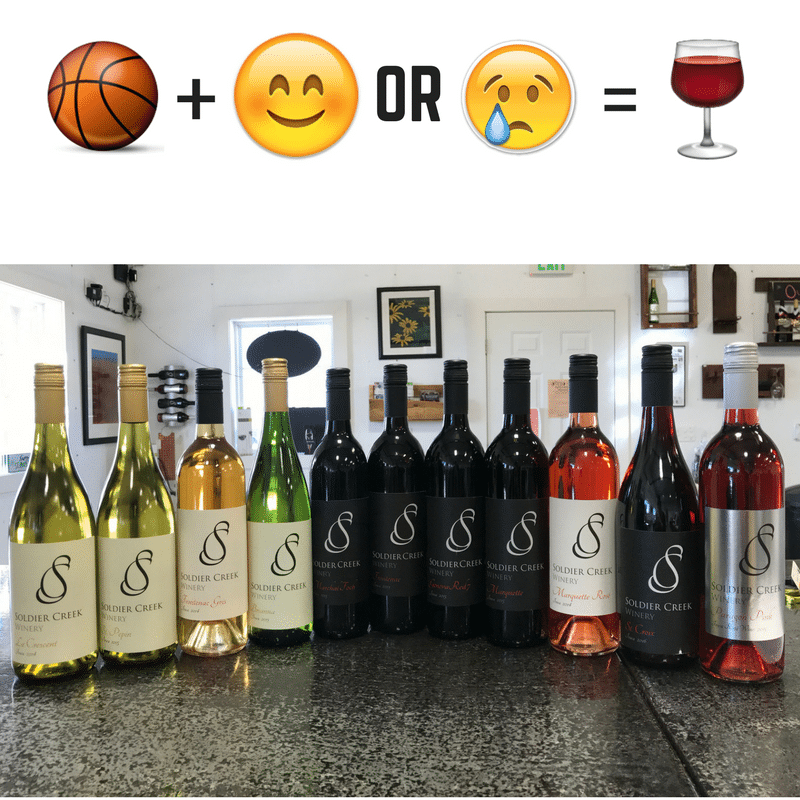
I hope this helps. wine drinkers unite!
with midbest love,
Meg
Let’s talk names
Specifically, our name! I’m sure we have many who have wondered “Why Soldier Creek Winery?”.
Well, it’s really quite simple. In Iowa, we know the best way to help our customers connect with us is by connecting with them. In our part of Webster County, there’s this little creek that feeds into the Des Moines River: Soldier Creek. In fact, Soldier Creek runs directly north of our oldest vineyard (see map below)! And, with that, you have a name. It’s really as simple as that!
now, let’s talk wine names
We have a few (and a few new ones in the works for the 2016 vintages!), so let’s just make a list:
- La Crescent
- St. Pepin
- Frontenac
- Geneva Red 7
- Maréchal Foch
- Marquette
- St. Croix
- Frontenac Gris
- Paragon Pink
- Brianna
la crescent

Our La Crescent wine is named for the variety of grape that is in it: La Crescent. We like to keep it simple at Soldier Creek Winery 🙂 Also, we want our winery to primarily reflect that of the classic wineries from Italy, France, and California– they name their wines, typically, for the grapes that comprise the wine.
The La Crescent grape is a French-American Hybrid grape developed by the University of Minnesota. Why a hybrid? If you live in/have been to/are from Iowa, you know that our perennial plants must be cold-hardy. This is why we grow French-American Hybrid grapes, they are cold-hardy! This grape originated from a cross between St. Pepin and ES 6-8-25, and I know those are just numbers and letters– but the lineage of La Crescent is deeply rooted in American and French grapes, thus giving it the distinction “French-American Hybrid”.
st. pepin
The Soldier Creek St. Pepin is, again, named for the grape that is in it: St. Pepin. We love this grape so much that we planted it in our old vineyard and the new (Junior) vineyard! Personally, this is my favorite wine that Anne makes. Especially in the summertime– there’s nothing better than sipping on a glass or two (or three) in your favorite reclined chair, in the sunshine, wearing sunglasses, sleeves rolled up, while you watch the dogs (children/birds/squirrels) play after your hard work in the garden/vineyard. Ahhhhhhh, I can just picture this from last summer 🙂
The St. Pepin grape is a unique French-American Hybrid, developed by the father of Midwest grapes: Elmer Swenson. This variety is unique in one way, really: it doesn’t pollinate itself with the help of wind or bees, it must be planted near a grape that can pollinate it in the spring. The parentage of St. Pepin is deep and varied, with many American and French grapes in the parentage. But, it is a direct hybrid of Seyval Blanc & Rosette.
frontenac

Our Frontenac is named for the rather popular grape that is in it: Frontenac. The Frontenac grape is such an aromatic and flavorful grape– I’m always so surprised at how toned down and complex the wine is compared to the grape on the vine. Anne is a wizard.
The Frontenac grape was developed at the University of Minnesota in 1996. This grape is direct hybrid of the Landot 4511 (also a hybrid) and the a cold hardy selection of Vitis riparia. Vitis riparia is a native grape variety– usually found in Canada and the central and eastern parts of North America.
geneva red 7
Again, we named our Geneva Red 7 for the grape variety that makes it: Geneva Red 7. We love the vigorous flavors of this wine, the grapes create such a cacophony of aromas and flavors that it’s hard to not like this wine (if you’re a red wine drinker).
The Geneva Red 7 (or GR7, as it’s called among grape growers, enologists, and researchers alike) was developed through Cornell University. The hybrid was created from a cross between ‘Buffalo’ and ‘Baco Noir’ in 1947. Usually, this grape is used exclusively in blends around Iowa. As far as I know (and after a quick Google search), we are the only winery offering this grape as a single-variety wine.
maréchal foch

Our Maréchal Foch wine is named for the grape variety that makes it. Did I mention how we like to keep things simple? 🙂
Now, this grape variety has a very interesting history! It is believed to have been created in Alsace, France by Eugene Kuhlmann. There is some debate among scientists about the parentage, but the debate only goes as far as guessing the following varieties in the mix: Goldriesling (a cross of Riesling and Courtiller Musqué), a Vitis riparia- Vitis rupestris cross, and Oberlin 595. This grape gets its name from the French marshal Ferdinand Foch– who had an important role in the First World War armistice negotiations. This grape was, formerly, very well known in the Loire region– it has since been reduced greatly and is now seen primarily in the northern parts of North America.
marquette
(Sorry about the missing photo!) Our Marquette is…you guessed it! Named for the grape variety that makes the wine! We love the earthy flavors of this wine, and the simplicity of the grape. In the vineyard, this grape is hardy and an easy grower.
The Marquette grape was developed by the University of Minnesota in 1994. It was created from a cross between MN 1094 and Ravat 262. This grape actually has a very well-known parent– Pinot Noir! It has a deep parentage among native cold-hardy grapes, which contribute (no doubt) to the higher acid levels. But, we could conclude that the grapes versatility and willingness to be made into something really beautiful could be from that famous parent, Pinot Noir.
St. croix
 Soldier Creek’s St. Croix is named for the grape variety that it is primarily comprised of: St. Croix. The St. Croix grape has been around for some time, and we love the versatility of this grape. In our short history, we have had this grape make a sweet-style wine and a semi-sweet (possibly even an off-dry) style wine.
Soldier Creek’s St. Croix is named for the grape variety that it is primarily comprised of: St. Croix. The St. Croix grape has been around for some time, and we love the versatility of this grape. In our short history, we have had this grape make a sweet-style wine and a semi-sweet (possibly even an off-dry) style wine.
The St. Croix grape was developed in 1981 by the father of the Midwest grape– Elmer Swenson. It is a complex cross between American hybrids and French hybrids. The most notable characteristic of this wine is the distinct lack of Vitis labrusca flavors. This is a highly sought after trait among the cold-hardy French-American Hybrid grapes for winemakers.
frontenac gris

Our Frontenac Gris, it’s something special, but we still name it for the grape that made it 🙂 Maybe you’ve noticed, but this rosé is orange. If you ever took a (guided) stroll through our vineyard, when the grapes were ripe, in the rows containing Frontenac Gris, you would notice one thing. The grapes….they’re….they’re…..slightly orange! Oh the humanity! Just kidding, it’s perfectly natural.
The Frontenac Gris grape has a bit of an interesting history from the University of Minnesota: this is the “white” version of Frontenac created from a single bud mutation. The mutation created this “grey” grape– thus the Gris part of the name (grey in French). Overall, the characteristics of this grape in the vineyard are the same as it’s parent, Frontenac. Which, really, is quite nice for us.
paragon pink

Hey! This one is different! Paragon Pink is a blend of Secor Vineyard grapes. Maybe you’ve noticed– the address of our two vineyards and the winery is on Paragon Avenue. And this wine is definitely Pink. And here you have it! A lovely alliteration of two important elements of this wine: Paragon Pink.
No one else has this particular blend– but you may find it tastes like some of your other favorite sweet Iowa wines. That’s okay. But this wine is completely comprised of grapes and only grapes. No other fruits. And, it definitely satisfies the sweet tooth of the sweet wine drinker!
brianna

Lastly, the Brianna. We named our Soldier Creek Brianna after the primary grape in this wine: Brianna. In my experience, the Brianna grape can exhibit different aromas and flavors depending on its terroir, or the area in which it is grown. I have had Brianna wines from the southeast part of Iowa with the most floral nose you wouldn’t believe– so distinctly Jasmine and Gardenia. Our Brianna has light floral aromas and unmistakably tropical flavors like Pineapple and Peach.
Again, we have Mr. Swenson to thank for this delicious grape. It was developed by Elmer Swenson, but named by Ed Swanson of Cuthills Vineyard in Nebraska. The grape is a cross between Kay Gray and ES 2-12-13. Brianna is a well-loved variety across the Midwest, and can be found at many wineries as a sweet wine.
so. there you have it.
What’s in a name? Hey, it’s not all that complicated. Some of the grape varieties have interesting and detailed names! We love the simplicity of our wines, and we hope you appreciate it. Now, if you know your favorite variety– you can ask for it! Most wineries know the grape varieties that comprise their blends, so ask for what you know you like! It’s the same as asking for a Pinot Grigio or something similar, but now you can sound like you know something about French-American Hybrids!
until next time, with midbest love,
Meg


